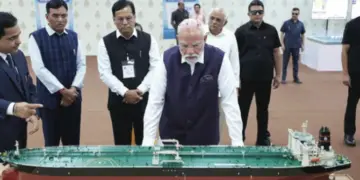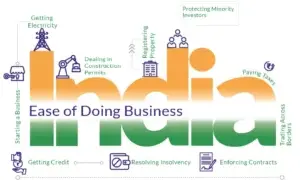On the occasion of the 79th Independence Day, the Hon’ble Prime Minister, while highlighting the significance of the rollout of Goods and Services Tax (GST), also emphasized the importance of undertaking the next generation of reforms in GST, keeping the interests of the common man, farmers, middle class, and MSMEs to the fore. These reforms, recently approved by the 56th GST Council, is a watershed moment in the evolution of India’s indirect tax system.
Through this article, I seek to highlight the underlying principles behind these reforms, the broad architecture within which they have been conceived, and the vision they embody for a more stable, equitable, and growth-oriented tax regime. The exercise of GST reforms rests on three interlinked pillars: Structural reforms, Rate rationalisation and Ease of living for taxpayers.
In designing the structural reforms, careful attention was paid to bring down the number of rate slabs to reduce the tax uncertainty. Ideally, the goods and services should be charged at standard rate, with some goods in the nature of common man use items to fulfil daily necessities of life being charged at lower ‘merit’ rate. Also, items in the nature of ‘sin’ goods or luxury goods should be charged at higher ‘special’ rate.
In a study of the past disputes, it was found that majority of disputes on classification and rate were related to food sector and automobile parts. The classification of food items is a problematic area due to multiple similar food products in the market. From the debate over caramelised versus salted popcorn to disputes relating to Malabar parathas, flavoured milk, rava idli mix, fryums, and papad, the sector has been riddled with tax ambiguities. A case in point is the increasingly popular baklava, which could be considered as a sugar confectionery or a bakery product depending on what one perceives of the food product. The reforms, therefore, envision a single tax rate for the food sector, eliminating confusion and ensuring clarity.
The automotive sector too has seen disputes, particularly in the classification of auto components. Often such disputes have travelled upto the Supreme Court, but still the ambiguity on their classification persists. A uniform rate across this sector will bring enormous relief, enhancing industry confidence and reducing litigation.
One of the most persistent issues is the inverted duty structures (IDS), where inputs are taxed at higher rates than finished goods, resulting in accumulation of ‘Input Tax Credit’. Such inversions are sometimes unavoidable as finished goods are of such nature or usage so as to be taxed at merit rate instead of standard rate. Whereas the inputs are of nature as to find application in multiple segments of the industrial sector. Subjecting such inputs to merit rate to correct inversion has its own complications. However, wherever feasible, inversions have now been corrected—particularly in cases where the raw material is predominantly used in one sector, as in the case of the fertilizer industry.
In sectors with a large presence of MSMEs, the impact of inversions is even more pronounced. For example, the textile industry, which employs over 45 million people, is highly diverse—ranging from hand-spun and handwoven products to large-scale mills. Fabrics by its nature is subject to merit rate of duty of 5%. There is no inversion in the natural fibre segment of the textile sector. However, in man-made-fabrics segment, there is inversion. Correction of inversion in the entire value chain is not possible due to revenue implications. However, care has been taken to ensure that inversion occurs at stages that do not unduly burden MSMEs thereby safeguarding employment and liquidity in this labour-intensive sector. To strike a balance, inversion stage has been pushed to a point where manufacturing stream transition from Chemical/ petrochemical sector to textile sector. Also, to provide comfort at this stage also, a very strong push has been given by Central Tax administration to streamline the refund process in IDS.
While on the drawing board, rate rationalisation was seen as exercise to reflect the aspirations of the common man and the middle class. Accordingly, the rates on items of mass consumption as well as aspirational goods were brought down to ‘merit’ rate, thereby enhancing affordability to a wider population and thus boosting demand also. Together, these principles form the very rationale of the rate rationalisation exercise, anchoring it firmly within the broader vision of inclusive and growth-oriented reform.
A significant aspect of these reforms is that they indirectly hint towards the robustness of the Indian economy. The timing is right also because the Government has got the fiscal space vacated by the levy of compensation cess on most of the items. Post July 2022, the collection from compensation cess is not accruing to the states and going in repayment of the loan taken to bridge the deficit in collections during COVID pandemic. Now the repayment is almost over and therefore fiscal space is created to boost the GST collection accruing to States and Centre. The decision to reduce the tax rate on cement from 28% to 18% signals the shift from the deep-rooted philosophy of revenue concern only. For the GST Council, the interests of common man have taken precedence, over absolute numbers in taxes in short term, going by the economic philosophy that putting money in the hands of common man results in rapid economic growth and ultimately robust tax collections.
The third pillar is centred around the guiding principle to simplify taxpayers’ interactions with the GST system at every stage. Reforms in this area target registration and refunds, ensuring that taxpayers face fewer procedural hurdles and reduced working capital blockages.
Such simplification is particularly important for MSMEs and small taxpayers. By making compliance less burdensome, the reforms encourage voluntary participation in the GST ecosystem and enhance trust between taxpayers and the administration.
India, already the world’s fourth-largest economy, is today reaping the dividends of robust domestic demand. In the face of a dynamic and uncertain global economic outlook, strengthening domestic resilience has become imperative. These reforms can help India cushion itself against external shocks while sustaining its growth momentum and bolstering India’s capacity to engage with the world from a position of strength.
At their core, these reforms seek to contribute to the larger national vision of building an Atmanirbhar Bharat. The simplification of tax processes, rationalisation of rates, and stability in policies together create a tax ecosystem that is inclusive, growth-oriented, and sustainable. These policy level changes are designed to strengthen crucial sectors and stimulate economic activity.
(Views are personal)
Courtesy PIB, Srinagar
The writer is Chairman, Central Board of Indirect Taxes and Customs (CBIC)




